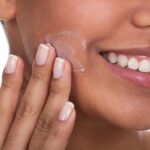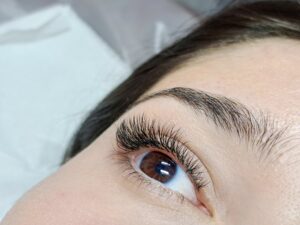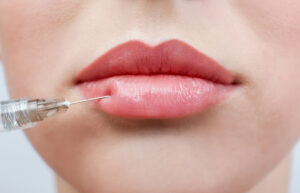Exfoliation removes dead skin cells to prevent clogging of pores and reveals healthy and younger-looking skin. While physical exfoliation has been known to people for years, chemical exfoliation is gaining popularity as it is an effective and gentler way to reveal a clear and brighter complexion. Read on to learn what chemical exfoliation is and how it improves your skin.
What is Chemical Exfoliation?
Chemical exfoliation involves using acids to break down dead skin cells and unclog pores. In addition, the exfoliating acids have various other skincare benefits, like increasing cell turnover, reducing inflammation, and improving skin tone and texture.
Types of Chemical Exfoliants
Chemical exfoliants are most commonly derived from natural sources like fruits. However, the following are the most common ingredients you may find in chemical exfoliants.
-
Alpha Hydroxy Acids or AHAs
Alpha hydroxy acids are water soluble acids obtained from fruits. They brighten up your skin tone and smoothen the appearance of rough texture by eliminating dead skin cells. In addition, some AHAs like glycolic or lactic acid has humectant properties that help moisturize the surface. The most commonly used AHAs are glycolic acid, lactic acid, malic acid, tartaric, and mandelic acid.
People with dry, oily, and normal skin can use AHAs to fade hyperpigmentation, dark spots, and wrinkles and improve bumpy skin texture.
-
Beta Hydroxy Acids or BHAs
Beta hydroxy acids are oil-based acids that dissolve dead skin cells and remove excess oil and buildup. In addition, they have anti-inflammatory properties as well. Salicylic acid is the most commonly used beta hydroxy acid, ideal for oily and acne-prone skin. The natural substitute for salicylic acid is willow bark extract.
-
Poly Hydroxy Acids or PHAs
Polyhydroxy acids work the same way as alpha and beta hydroxy acids, but their molecules are way bigger and do not penetrate the skin as deeply.
People with sensitive skin can safely use polyhydroxy acids as they provide the gentlest exfoliation. Examples of PHAs are gluconolactone, galactose, and lactobionic acid.
-
Trichloroacetic acid or TCAs
Trichloroacetic acid provides a deeper peel and is very effective for reversing the signs of aging and reducing pigmentation, melasma, and scarring. But this ingredient is limited to clinic use only, and professionals know how to use it according to your skin concerns.
-
Fruit Enzymes
Enzymes from certain fruits like papaya or pear provide gentle exfoliation. Anyone who faces a hard time with AHAs or BHAs can use fruit enzymes to eliminate dead skin cells. They break down the keratin proteins on dead skin cells’ upper layer and reveal fresh, new, and bright skin from beneath the surface.
How to Start with Chemical Exfoliation?
Always start with chemical exfoliation slowly. Consult a skincare specialist before choosing a product for your skin type, and do not forget to try a patch test before use. Make sure to use it only once a week and see how your skin reacts to it. If you do not spot any side effects, increase the frequency up to twice or thrice a week.
The bottom line is to understand your skin type and choose the right concentration of chemical exfoliant to keep your skin happy and healthy.
*Information in this article is not medical advice and may not be factually accurate. It is intended for entertainment purposes only. Consult with a physician before attempting any tips in this blog post and to get the most up to date factual data about any procedure or treatment.














